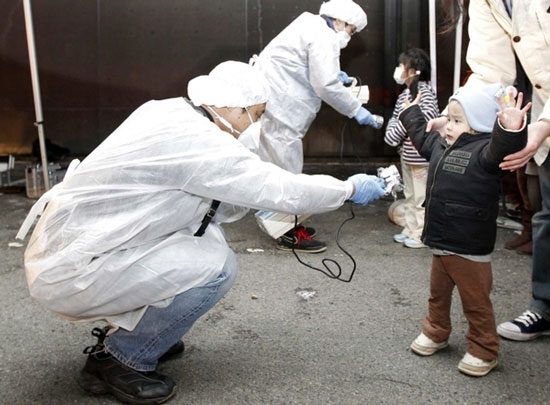Half of Fukushima children are radioactive
Nearly a quarter of the medical samples of children living in areas of radioactive contamination from the Fukushima nuclear power plant (Japan) give positive results for radioactive substances.
Medical tests were conducted with more than 1,000 children aged 1-15 years living in Iwaki City, Kawamata Town and Iitate Village in Fukushima Prefecture (Japan) - identified areas exposed to radiation. from the Fukushima nuclear power plant after the March 11 earthquake and tsunami.

The results showed that radioactive substances were detected in the thyroid gland of 45% of children tested. However, Japan's task force to address nuclear incidents said the level of contamination was not enough to affect the health of children.
The Telegraph newspaper quoted an unnamed member of the force as saying: 'According to official Japanese standards, we do not detect any radiation-contaminated children above the level that could cause problems. health".
Specifically, no children were exposed to radiation higher than 0.2 mSv - the standard set by the Japan Nuclear Safety Commission. However, the Japan Nuclear Safety Commission is considering tightening safety standards to 0.1 mSv.
Although experts claim that radiation levels do not have a health impact, the test results have worried parents of children living around the Fukushima nuclear power plant.
Children and babies are the most radioactive objects. If a large amount of radioactive material is concentrated in the thyroid gland, the chances of these radioactive substances causing cancer are very high.
Earlier, the Fukushima prefectural government announced a periodic free medical examination plan for about 360,000 people under the age of 18 throughout life, to detect the risk of cancer early due to radiation exposure.
- Fukushima children are exposed to radiation below the danger threshold
- Fukushima children are tested for cancer periodically
- Japan tested 300,000 children for suspected radioactivity
- Japan acknowledged the first death due to radiation at Fukushima
- Radioactive material from the Fukushima disaster is found in California
- Again leaking radioactive water at the Fukushima plant
- Announcing the method of cleaning up radiation in Fukushima
- More than 20 Fukushima schools are highly radioactive
- The waters near Fukushima are 1,000 times more contaminated
- The robot also died at the radioactive area of Fukushima
- Japan's Fukushima plant, which is used to save asphalt
- Fukushima is flooded with radioactive wild boar
 Is the magnetic North Pole shift dangerous to humanity?
Is the magnetic North Pole shift dangerous to humanity? Washington legalizes the recycling of human bodies into fertilizer
Washington legalizes the recycling of human bodies into fertilizer Lightning stone - the mysterious guest
Lightning stone - the mysterious guest Stunned by the mysterious sunset, strange appearance
Stunned by the mysterious sunset, strange appearance